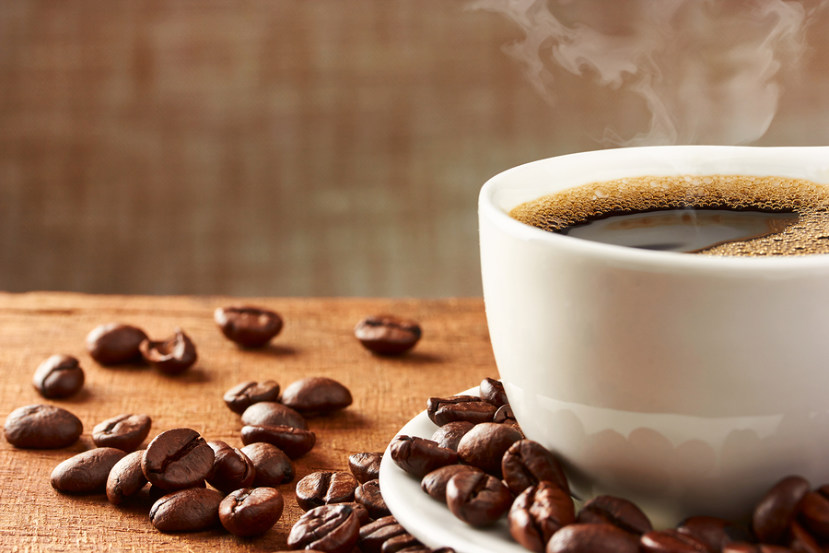
Caffeine is a natural ingredient found in coffee beans, tea leaves, cocoa beans, guarana and yerba maté. It is added to some foods and beverages, supplements and medications. Read this article to learn more about the health effects of caffeine and how much is safe.
Caffeine and your body
Caffeine acts as a stimulant (increases alertness). Some people are more sensitive to caffeine than others. For these people, too much caffeine can cause:
-
trouble sleeping
-
irritability
-
nervousness
-
rapid heart rate
-
headaches
Safe amounts of caffeine
The following amounts of caffeine are considered safe:
|
Age
|
Milligrams per day (mg/day)
|
|
Adults, 18 and older
|
Up to 400 mg
|
|
People planning to become pregnant, who are pregnant, or who are breastfeeding
|
Up to 300 mg
|
Caffeine and children and adolescents
Children and teens under 18 years old should not have more than 2.5 milligrams of caffeine per kilogram of body weight.
For example, if a child weighs 75 lbs (34 kgs), they should not have more than 85 mg of caffeine per day.
Common sources of caffeine
Caffeine in coffee or coffee based beverages*
|
Beverage
|
Serving Size
|
Caffeine (mg)
|
|
Coffee, brewed
|
250 mL (1 cup or 8 oz)
|
100 – 170
|
|
Cappuccino or Latte
|
250 mL (1 cup or 8 oz)
|
45 – 75
|
|
Coffee, instant
|
250 mL (1 cup or 8 oz)
|
76 – 106
|
|
Espresso, brewed
|
30 mL (1 oz)
|
43 – 90
|
|
Decaffeinated coffee
|
250 mL (1 cup or 8 oz)
|
3 – 15
|
Caffeine in tea*
|
Beverage
|
Serving Size
|
Caffeine (mg)
|
|
Iced tea, sweetened
|
1 can (355 mL)
|
15 – 67
|
|
Tea, leaf or bag (black, flavoured black)
|
250 mL (1 cup)
|
43 – 80
|
|
Tea (green, oolong, white)
|
250 mL (1 cup)
|
25 – 48
|
|
Decaffeinated tea
|
250 mL (1 cup)
|
0 – 5
|
|
Herbal teas, all varieties
|
250 mL (1 cup)
|
0
|
Caffeine in other beverages*
|
Beverage
|
Serving Size
|
Caffeine (mg)
|
|
Energy drink, various types
|
250 mL (1 cup)
|
80 – 100
|
|
Diet cola
|
355 mL (1 can)
|
39 – 50
|
|
Cola
|
355 mL (1 can)
|
36 – 46
|
Caffeine in cocoa products (chocolate)*
|
Beverage
|
Serving Size
|
Caffeine (mg)
|
|
Chocolate, dark
|
1 bar (40 g)
|
27
|
|
Chocolate, milk
|
1 bar (40 gr)
|
8 - 12
|
|
Chocolate milk
|
250 mL (1 cup or 8 oz)
|
3 - 5
|
*Note: these amounts are approximate. The caffeine content of beverages and foods can vary a lot depending on the brand and production methods, etc.
Learn more about energy drinks by reading Energy Drinks FAQs.
Tips on lowering your caffeine intake:
If you think you may be taking in too much caffeine, the best approach is to limit your caffeine intake gradually over several days. Try these tips for lowering caffeine intake:
-
Enjoy water, soda water, milk or fortified plant-based beverages.
-
Try flavoured herbal tea over ice. Note: some herbal teas need to be avoided during pregnancy and breastfeeding.
-
Instead of 3 cups of coffee a day, cut down gradually by having 2 cups of coffee and 1 cup of decaffeinated coffee.
How can a dietitian help?
A dietitian can review the foods and beverages you are consuming to make sure you are getting all the nutrients you need to be healthy, as well as staying within the recommended limits for caffeine. A dietitian will work with you to meet your goals and health needs. Connect with a dietitian today!
Bottom line
Too much caffeine can lead to negative side effects like trouble sleeping and irritability. Some people are more sensitive to caffeine than others. Use this article to see how much caffeine you get in an average day to see if you need to reduce your intake.
You may also be interested in:
Facts on Energy Drinks
Tea Time
The Juicy Story on Drinks
This article was written and reviewed by dietitians from Dietitians of Canada. The advice in this article is intended as general information and should not replace advice given by your dietitian or healthcare provider.
Last Update – April 10, 2023